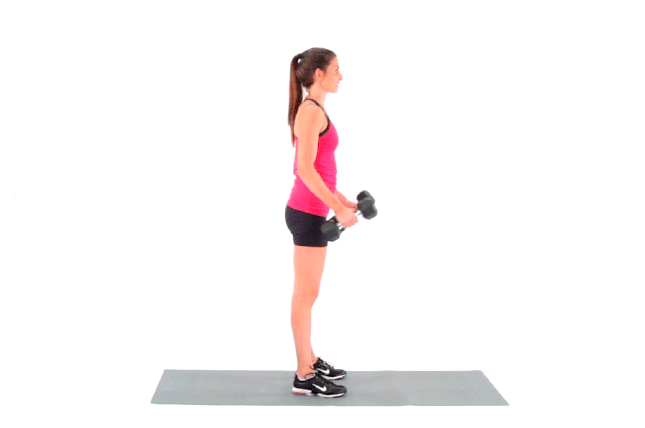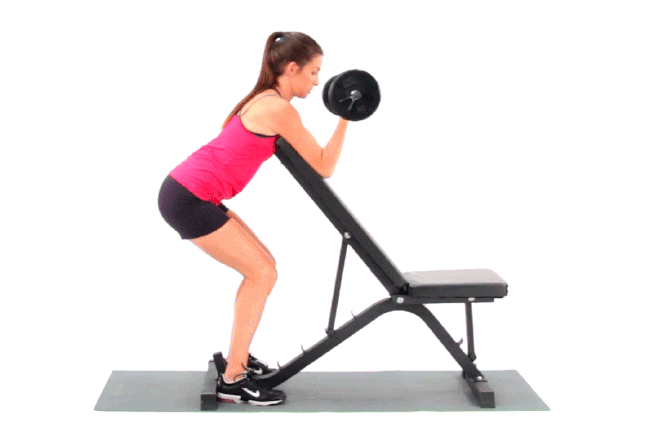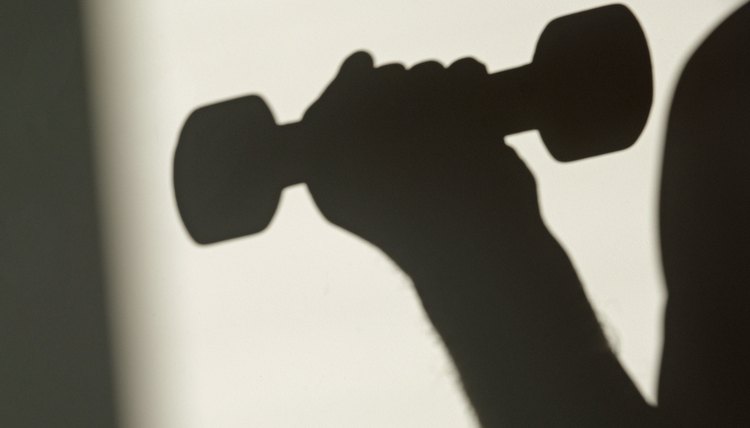Hammer Curl vs. Preacher Curl

Biceps exercises tone and define the muscles of your upper arm. They come in a variety of styles, like the hammer curl and the preacher curl which are some of the best exercises to add to an arm workout. You perform both by raising your hand toward your shoulder, but each uses activation in different arm muscle groups. This is why many bodybuilders utilize these exercises in different ways during their upper body workout routines but beginner lifters and gym goers may be confused how to use these workouts to get bigger arms. Here are some key differences between the two popular arm workouts
How to perform a Dumbbell hammer curl
A dumbbell bicep curl variation, the dumbbell hammer curl is a concentration curl that can easily be added to a biceps training with other staples like the cable curl, reverse curl and incline bench press. When you perform a hammer curl, you either sit or stand using dumbbells as the resistance tool. Stand or sit tall and hold a dumbbell in each hand, shoulder-width apart. Straighten your arms at your sides and face your palms toward your body. Exhale and bend your elbows to raise the dumbbell toward your shoulders. Inhale and straighten your arms to start position. As you perform the hammer curl, keep your spine and wrists straight, your stomach tight and use a light grip on the dumbbells. Raise both hands at once or alternate the hammer curls for variety. Be sure to limit your reps or repetitions, stopping when proper form is too challenging to maintain.
How to perform the preacher curl

LIVESTRONG.COM
You typically perform a preacher curl from a seated position, but standing preacher benches are available. This exercise uses an EZ bar with free weights secured to the ends as the resistance tool. The bar, which is similar to the barbell used in barbell curls, is placed in the holds on the front of the curl bench. Sit on the bench and position the height of the seat rest so your elbows meet the middle of the curl pad. Stand and grasp the bar with your palms facing up in a neutral grip. Hold onto the bar at a position that is near or slightly more narrow than shoulder distance apart. Bend your elbows to complete the ez bar curl, finishing at your shoulders and return to a seated position. Inhale and slowly straighten your arms as you lower the bar. Keep a slight bend in your elbows. Exhale and bend your elbows as you raise the bar toward your shoulders. Be sure to consult with a personal trainer before starting a workout routine.
Muscle Differences in hammer curl vs preacher curl
The different hand positions between the hammer curl and preacher curl exercises are what change the muscle focus. The palms-up supinated grip position in the preacher curl causes your biceps brachii and brachialis muscles to contract creating hypertrophy and bigger biceps. The bicep muscle is the largest muscle in the front of your upper arm starting at the shoulder joint and the palms up helps to target the short head of the bicep and create muscle growth. The range of motion also helps to exercise to flexors to create flexion.
The palms-in position during the hammer curl works the brachioradialis muscle. This muscle begins on the lower portion of your upper arm, crosses over your elbow and attaches near your wrist. This is because the hammer curl takes your bicep out of the supinated or underhand position and forces your brachioradialis to lift the weight in this isolation exercise.
The Difference in Arm Engagement

LIVESTRONG.COM
Bicep strength training exercises are categorized into unilateral or bilateral exercises. Unilateral bicep curls use one arm at a time, such as in hammer curls. Each hand holds a dumbbell, so each arm receives an equal amount of resistance to lift through the exercise. Both your right and left arms will receive the same strength benefits. A bilateral exercise uses both arms at the same time, such as in a barbell preacher curl. The drawback to this exercise is that your stronger arm may lift more of the resistance and your weaker arm will simply follow the bar as it is lifted. Use a concentrated effort when performing the preacher curl and aim to use both arms equally.
References
Writer Bio
A mother of two and passionate fitness presenter, Lisa M. Wolfe had her first fitness article published in 2001. She is the author of six fitness books and holds an Associate of Arts in exercise science from Oakland Community College. When not writing, Wolfe is hula-hooping, kayaking, walking or cycling.
